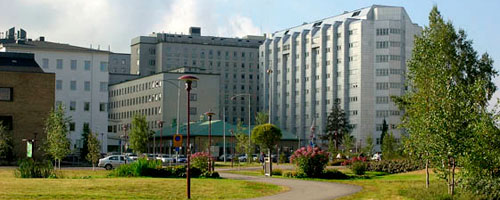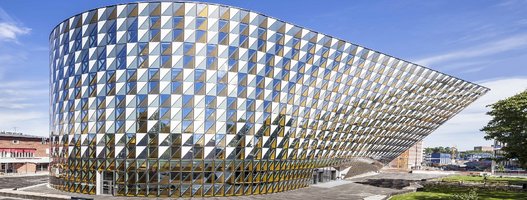
![]()
Department of Clinical Microbiology, Aarhus University Hospital
At Department of Clinical Microbiology, the research includes antibiotic susceptibility of A. actinomycetemcomitans and the mechanisms behind resistance towards antibiotics. Furthermore, focus is placed on A. actinomycetemcomitans as a part of the HACEK-group of bacteria causing infectious endocarditis. The methods used to analyze and detect different characteristics of A. actinomycetemcomitans are PCR (conv. and real-time), identification by MALDI-TOF, genome sequencing, serotyping by multiplex PCR, transformation assay and resistance studies using E-test, disc diffusion test and agar dilution test with MIC-plates according to EUCAST guidelines.
Department of Dentistry, Aarhus University
Department of Dentistry, Aarhus University has for many years been a platform for research concerning A. actinomycetemcomitans and with a particular focus on the highly leukotoxic JP2 clone of A. actinomycetemcomitans. The main focus has been on A. actinomycetemcomitans' colonization in different populations identified by conventional cultivation technics and molecular biological tests (e.g., PCR) and with a particular focus on the microevolution, the geographic dissemination (phylogeny in terms of multi locus sequence typing, MLSA) and the leukotoxic activity of the JP2 genotype of A. actinomycetemcomitans (ELISA). Numerous A. actinomycetemcomitans characteristics have been related to periodontal status (measurement of clinical attachment loss on children and adolescents) and various subject-related information.
![]()

![]()
Department of Odontology, Umeå University
A. actinomycetemcomitans has been a research focus at the Department of Odontology at Umeå University for more than 2 decades. A fruitful collaboration between the divisions of oral microbiology and molecular periodontology has been the basis for a number of research projects and PhD programs.
Clinical, as well as experimental studies have resulted in several discoveries that contribute to clarifying the role of A. actinomycetemcomitans in periodontitis. The activities have also resulted in a large collection of A. actinomycetemcomitans-isolate from individuals of different geographic origin and various clinical presentation of the disease. The ongoing genotypic and phenotypic characterization of these isolates will contribute to identify the highly virulent clones of this bacterium.
![]()

![]()
Department of Dental Medicine, Karolinska Institute, Sweden
The group’s activities related to A. actinomycetemcomitans research span from clinical sample analysis, to host-bacteria interaction models. The clinical part includes the development of molecular methods for detecting A. actinomycetemcomitans in clinical samples (such as dental biofilms and saliva), or the systemic antibody responses to this species (i.e. in human serum) in various pathologies. The in vitro research part is focused on the functional role of A. actinomycetemcomitans within multi-species biofilms, and their interactions with human 3D organotypic tissues, by means of proteomic analyses. Moreover the group has a research track record on the interaction of A. actinomycetemcomitans with host cells, deciphering the roles of its individual virulence factors.

![]()
Department of Biochemistry, University of Turku
Short description of the research: The main research focus of our groups is the molecular mechanisms which A. actinomycetemcomitans uses when sensing the inflammation reaction. We have discovered that A. actinomycetemcomitans binds and internalizes various cytokines which may alter the virulence properties of the opportunistic pathogen as well as modulate the host defense systems.
We produce recombinant proteins from potential candidates of bacterial cytokine sensing cascade and investigate their properties using various biophysical methods, such as micro scale thermophoresis (MST), isothermal titration calorimetry (ITC), various microplate assays, nuclear magnetic resonance (NMR) spectroscopy and x-ray crystallography.
In addition, we produce mutants having deletions of the protein coding genes, and characterize their properties in 3D organotypic tissue cultures which model the host-pathogen–interaction. Methods used in these studies are immunohistochemistry and –electron microscopy, flow cytometry as well as methods in proteomics.
![]()

![]()
Section of Oral Microbiology and Immunology, University of Zürich
The group's interest in A. actinomycetemcomitans research is oriented around the roles of this species within in vitro multi-species biofilm models. This involves the investigation of the quantitative and qualitative changes of the structure of the biofilms.
The investigative methods include visual analysis by the use of confocal laser scanning microscopy (CLSM), combined with fluorescence in situ hybridization (FISH) by 16S rRNA-based oligonucleotide probes, and immunofluorescence (IF) using species-specific monoclonal antibodies.